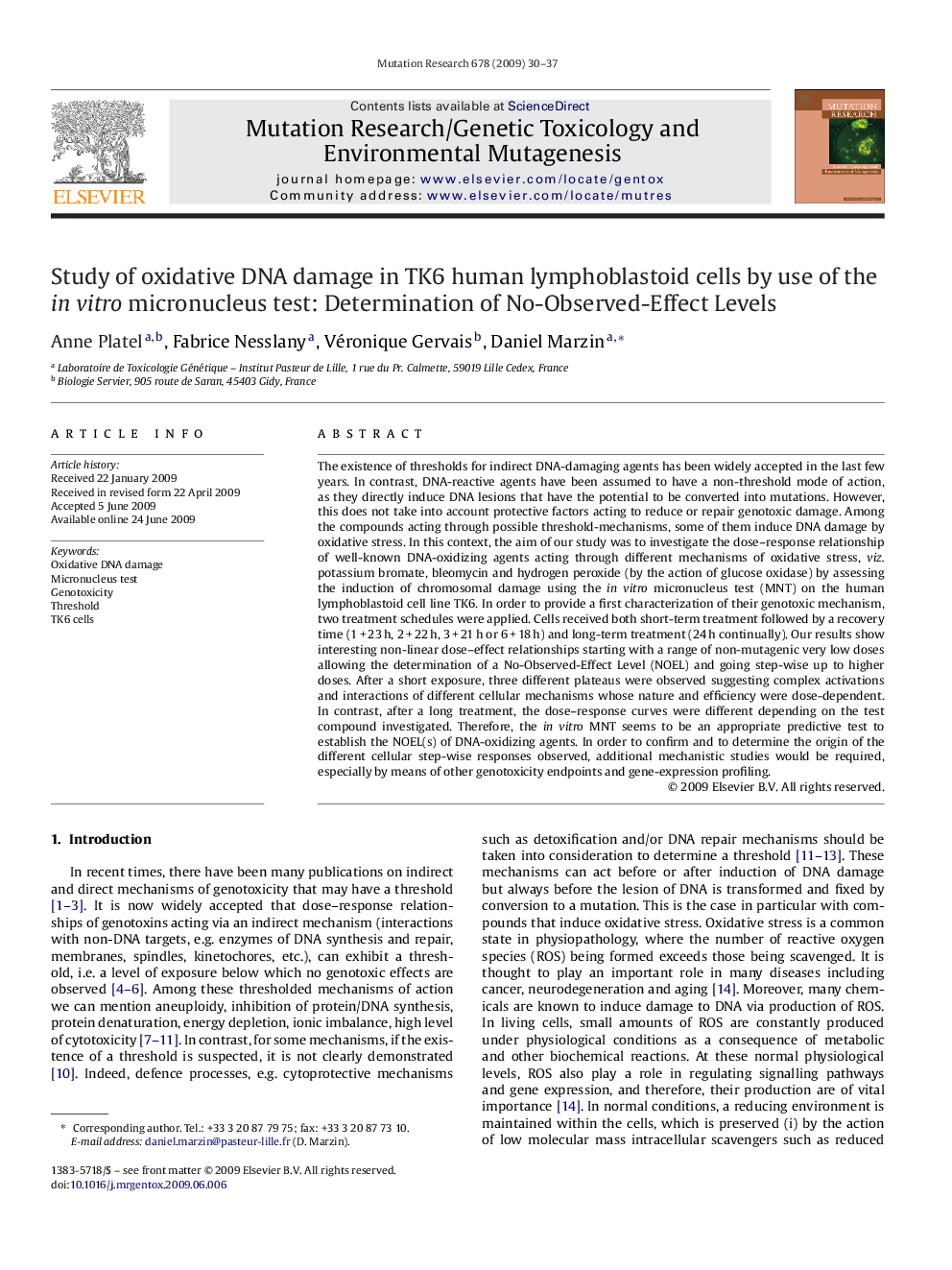| کد مقاله | کد نشریه | سال انتشار | مقاله انگلیسی | نسخه تمام متن |
|---|---|---|---|---|
| 2148763 | 1089580 | 2009 | 8 صفحه PDF | دانلود رایگان |

The existence of thresholds for indirect DNA-damaging agents has been widely accepted in the last few years. In contrast, DNA-reactive agents have been assumed to have a non-threshold mode of action, as they directly induce DNA lesions that have the potential to be converted into mutations. However, this does not take into account protective factors acting to reduce or repair genotoxic damage. Among the compounds acting through possible threshold-mechanisms, some of them induce DNA damage by oxidative stress. In this context, the aim of our study was to investigate the dose–response relationship of well-known DNA-oxidizing agents acting through different mechanisms of oxidative stress, viz. potassium bromate, bleomycin and hydrogen peroxide (by the action of glucose oxidase) by assessing the induction of chromosomal damage using the in vitro micronucleus test (MNT) on the human lymphoblastoid cell line TK6. In order to provide a first characterization of their genotoxic mechanism, two treatment schedules were applied. Cells received both short-term treatment followed by a recovery time (1 + 23 h, 2 + 22 h, 3 + 21 h or 6 + 18 h) and long-term treatment (24 h continually). Our results show interesting non-linear dose–effect relationships starting with a range of non-mutagenic very low doses allowing the determination of a No-Observed-Effect Level (NOEL) and going step-wise up to higher doses. After a short exposure, three different plateaus were observed suggesting complex activations and interactions of different cellular mechanisms whose nature and efficiency were dose-dependent. In contrast, after a long treatment, the dose–response curves were different depending on the test compound investigated. Therefore, the in vitro MNT seems to be an appropriate predictive test to establish the NOEL(s) of DNA-oxidizing agents. In order to confirm and to determine the origin of the different cellular step-wise responses observed, additional mechanistic studies would be required, especially by means of other genotoxicity endpoints and gene-expression profiling.
Journal: Mutation Research/Genetic Toxicology and Environmental Mutagenesis - Volume 678, Issue 1, 1 August 2009, Pages 30–37